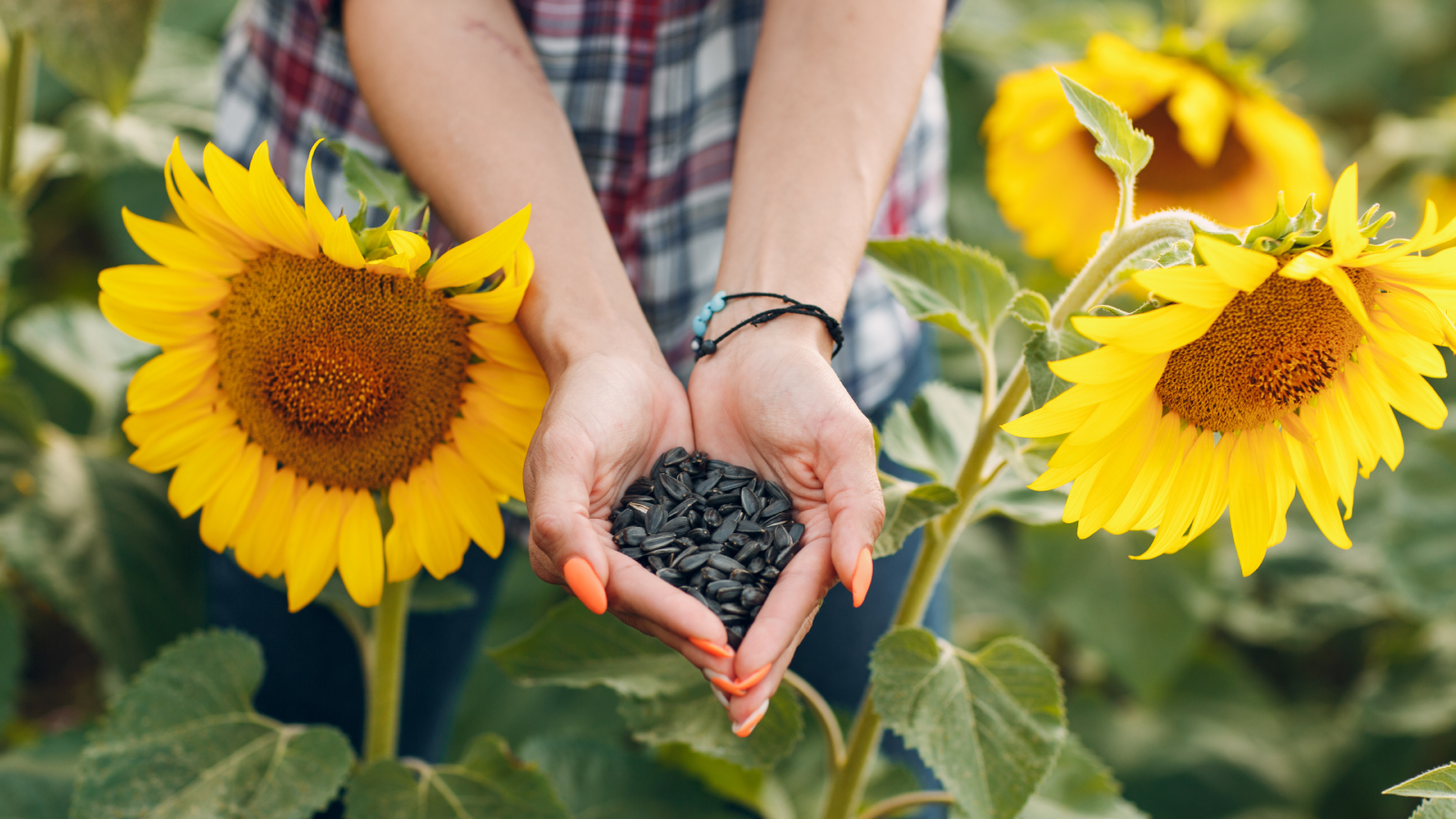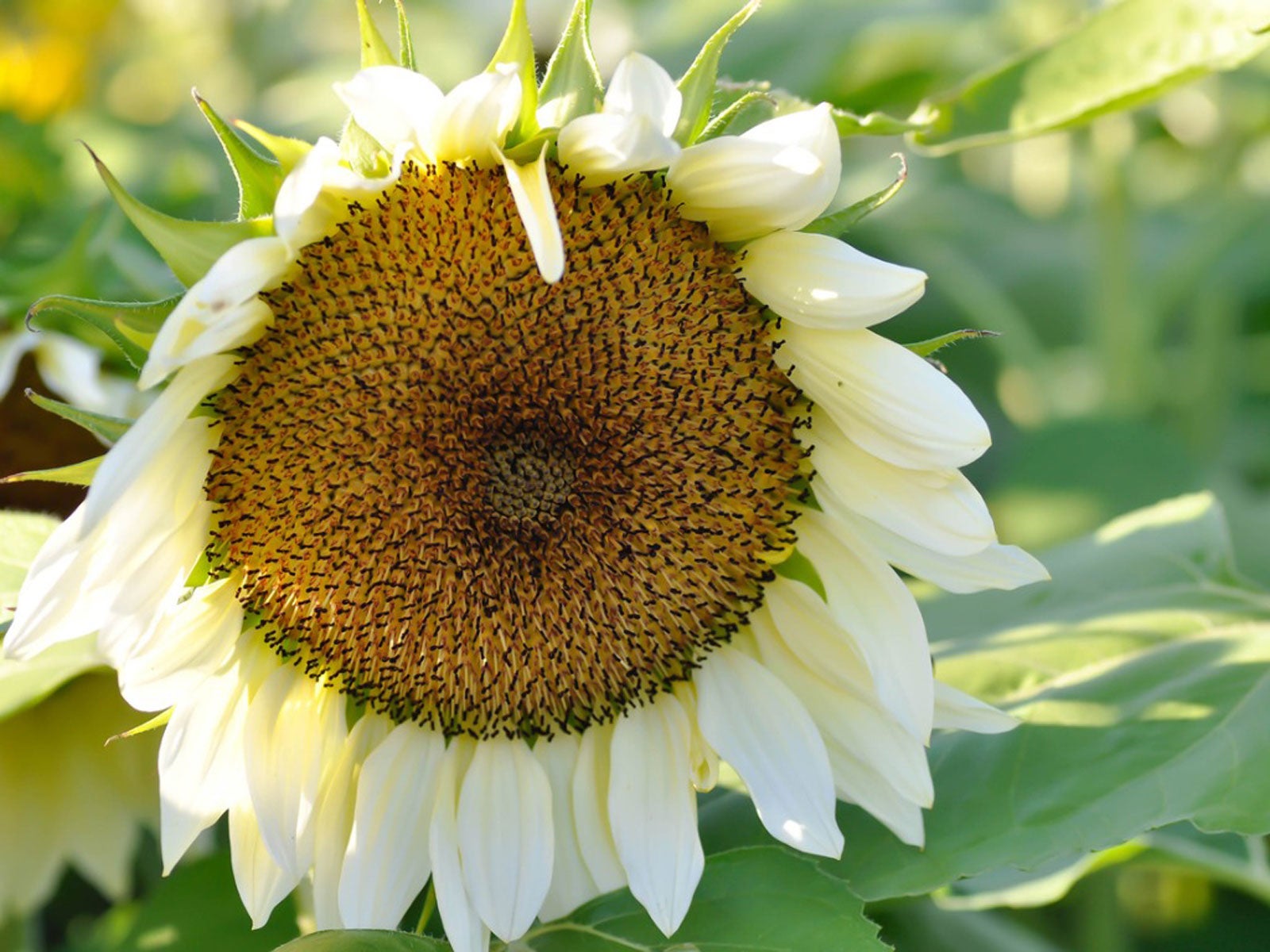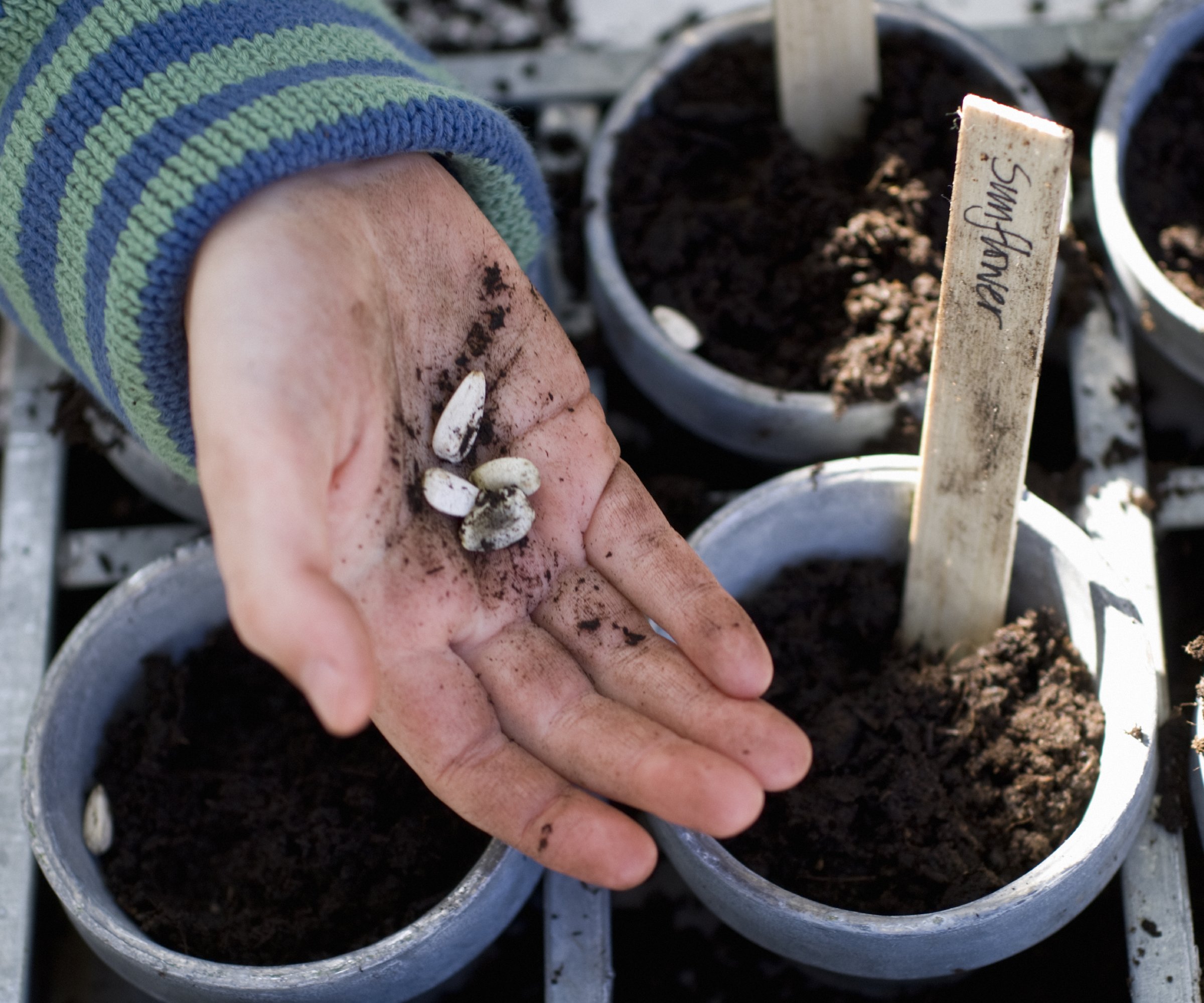How To Harvest Sunflower Seeds To Eat Or Grow In Next Year's Garden
Collecting sunflower seeds is a fun end of summer activity. Find out when and how to harvest sunflower seeds to eat or grow next year's garden.


Tonya Barnett
Native Americans have known how to harvest sunflower seeds since long before the first Europeans arrived. They boiled the heads to extract the oil and ate the seeds either raw or baked in breads, and infusions were used medicinally. The seeds are a good source of calcium, phosphorus, and potassium.
One of the pleasures of watching those huge yellow sunflowers following the summer sun is anticipating the harvest of sunflower seeds in the fall. If you've planted a sunflower variety with large, full heads, you’re in for a treat.
But beware–you won’t be the only one harvesting sunflower seeds. Sunflower harvesting is a favorite pastime of birds, squirrels, field mice, and deer. To beat the local wildlife, it's important to know how and when to harvest sunflowers.
When to Harvest Sunflower Seeds
Harvesting sunflowers is easy, but deciding when to do it can be important. Sunflower heads picked before the proper time may have plenty of seed coats with little meat. If you wait too long to harvest sunflowers, the tender seeds will be too dry to roast. If you wait until the animals start harvesting for you, there’ll be nothing left for you!
Here are four signs to watch for:
1. Florets Fade
It’s easier to decide when to harvest sunflower seeds if you understand the flower’s structure. Sunflowers are a composite bloom. This means that there are multiple florets within each head. Ray florets are those attached to a petal, and these seldom produce seed. The center of the flower contains the disc florets, which will produce seeds after pollination.
Florets with a dried or shriveled appearance are among the first signs that seed development has started. At this time you might want to cover the flower heads with a lightweight cheesecloth or muslin to deter foraging animals.
Gardening tips, videos, info and more delivered right to your inbox!
Sign up for the Gardening Know How newsletter today and receive a free copy of our e-book "How to Grow Delicious Tomatoes".
2. Flower Heads Droop
As their seeds continue to develop, sunflowers are likely to drop their petals and change appearance. The most notable sign is the bloom’s nodding habit, in which the flower begins to droop, facing toward the ground. You may also notice the plants being visited by birds more frequently as the fresh seed approaches maturity.

3. Backs of Heads Turns Yellow
A change in color is another key indicator that sunflower seeds are ready to harvest. At maturity, the backs of each sunflower head often fade to a pale yellow or straw-like hue. Though this transition may be more evident in some varieties than others, this change in appearance is a good indication that it may be time to harvest the seeds.
4. Seeds Get Larger
When they’re ready, the sunflower’s seeds will look plump, and the seed coats will be fully black or black and white striped, depending on the variety.
How to Harvest Sunflower Seeds
Once you know when your sunflower seeds are ready to harvest, it's time to start collecting. It only takes a few simple steps to harvest your seeds. Here's how to do it:
1. Let Them Ripen on the Stems
One method for harvesting sunflower seeds is to allow the seeds to fully ripen on the stem. When seeds are fully ripe and just beginning to loosen from the head, cut the stem about one inch (2.5 cm) below the head. Now briskly rub the seeds from the head with your hand, blow off the chaff, and allow the seeds to dry before storing.
An alternative method is to wait until about ⅔ of the seeds are mature. Cut a longer piece of stem -- 3 to 4 inches (7.5 to 10 cm) works well. Wrap a paper bag around the head and hang the heads in in a well ventilated area for a few weeks to dry. Make sure the area is warm, but not hot.
2. Cut Off the Heads
There are several ways to harvest sunflowers. One is simply cutting the heads off the plant, leaving a short length of stem attached to the flower. Since many varieties of sunflower grow quite large, you should use care in the cutting stems. Branching types can likely be cut with a sturdy pair of bypass snips, while giant and single-flower cultivars may require the use of pruners or loppers.
3. Place in a Bag
Cut flower heads can be placed into a bag after harvest. Smaller flowers can be placed together in bunches, but larger types may require more space. Brown paper bags or net mesh are among the most popular and cost-effective options. Before storage, each bag should be loosely secured with a twist tie, string, or rubber band.
4. Hang Upside Down
Hanging seed heads upside down in a warm, dry space will help to dry and further prepare the seed for harvest. If they have ample air flow, dried seed heads should be ready in approximately 3-4 weeks. At this time, mature sunflower seeds should fall freely from the flower head. If needed, you can help coax the seeds from the plant by gently rubbing the sunflower heads together.
How to Roast Sunflower Seeds
After harvest, sunflower seeds can be roasted. You may want to hull, or remove the seeds from their shells, before roasting them.
The roasting process will vary depending upon personal preference, but most consist of a soak in salt solution, followed by a long cook period under low-medium heat. Finished seeds will have a light, toasted aroma and golden appearance. The use of additional spices and seasoning can help you to craft your own unique garden snack.
How to Save Sunflower Seeds for Planting
If you’d like to save your sunflower seeds for planting, do so directly after they are completely dry. The drier the seeds are, the longer they will keep. A closed container such as a sealed, airtight mason jar works best. Don’t forget to label the contents clearly and date it.

For seeds that will be stored for only a season, place the container in a cool, dark location. The refrigerator is a great place to store seeds. To help ensure the seeds remain dry, you can place silica gel or 2 tablespoons (29.5 mL) of powdered milk wrapped in tissue in the bottom of the jar.
You can also freeze your seeds. Either place them in an airtight, freezer safe container or toss them into a freezer bag. Most sunflower seeds will last for up to a year when stored in the fridge or freezer. Those stored short term, such as in the pantry, should be used within 2-3 months.
If you want to separate your seeds into envelopes, winnowing may help to remove additional debris, leaving only viable seed.

Jackie Rhoades began writing for Gardening Know How in 2010.
- Tonya BarnettWriter
-
 Try The Trend – Turn Any Bed Into A Keyhole Garden With This Clever In-Ground Composter
Try The Trend – Turn Any Bed Into A Keyhole Garden With This Clever In-Ground ComposterKeyhole gardening is an efficient and sustainable practice that saves space. Get started on this DIY project quickly and easily with an in-ground composter.
By Bonnie L. Grant
-
 4 Superfast Composting Methods: Turn Waste Into Garden Gold In 30 Days Or Less
4 Superfast Composting Methods: Turn Waste Into Garden Gold In 30 Days Or LessTry the fastest composting methods to turbocharge your pile and transform kitchen scraps and garden waste into finished compost in just a few weeks.
By Mary Ellen Ellis